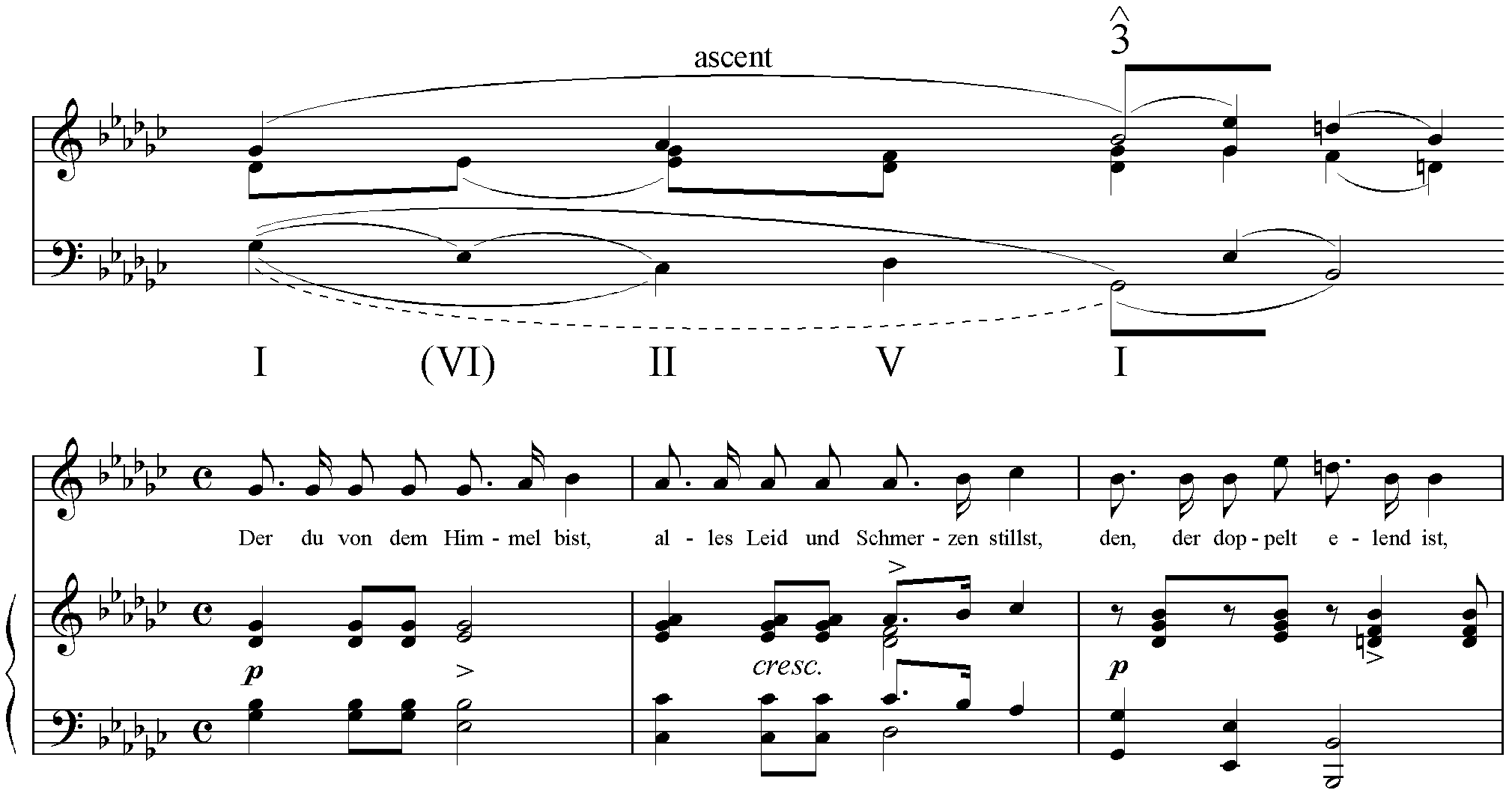(German: Anstieg.)
Line ascending to the head note of the primal line. Schenker himself gives as example the first bars of Schubert’s Wanderers Nachtlied op. 4 n. 3 (Free Composition, Fig. 37 a), with an initial ascent to ![]() :
:
The ascent G![]() 4–A
4–A![]() 4–B
4–B![]() 4 of the top voice occurs here above a descending register transfer in the bass, from G
4 of the top voice occurs here above a descending register transfer in the bass, from G![]() 3 to G
3 to G![]() 2, elaborated by neighbour notes in the middle voices to form a progression I–(VI)–II6–V–I.
2, elaborated by neighbour notes in the middle voices to form a progression I–(VI)–II6–V–I.
Before conceiving the primal line as necessary descending (i.e. before 1926), Schenker had included ascending lines in the primal lines. From Das Meisterwerk in der Musik II onwards, he relegated ascending lines to lower hierarchic levels, and particularly the initial ascent to a secondary level compared to that of the descending primal line.
In the section “Approaching the first note of the Urlinie by an initial ascent” (Das Meisterwerk in der Musik II, p. 22, note 9; The Masterwork in Music II, p. 8, note 16), he quotes previous analyses where he had shown a line first asccending to ![]() , then descending back to
, then descending back to ![]() : the Andante of Beethoven’s Fifth Symphony (3-4-
: the Andante of Beethoven’s Fifth Symphony (3-4-![]() –
–![]() –
–![]() –
–![]() –
–![]() , Beethovens Fünfte Sinfonie, p. 36 sq.), Händel’s Aria (1-2-3-4-
, Beethovens Fünfte Sinfonie, p. 36 sq.), Händel’s Aria (1-2-3-4-![]() –
–![]() –
–![]() –
–![]() –
–![]() , Der Tonwille 8/9, p. 3, fig. 1), Chopin’s Etude in E flat minor (3-4-
, Der Tonwille 8/9, p. 3, fig. 1), Chopin’s Etude in E flat minor (3-4-![]() -6-
-6-![]() –
–![]() –
–![]() –
–![]() –
–![]() , Das Meisterwerk in der Musik I, p. 148, fig. 1), the Ritornello of the fourth movement of Bach’s Cantata BWV 128 (1-2-3-4-
, Das Meisterwerk in der Musik I, p. 148, fig. 1), the Ritornello of the fourth movement of Bach’s Cantata BWV 128 (1-2-3-4-![]() –
–![]() –
–![]() –
–![]() –
–![]() , Das Meisterwerk in der Musik II, appendix XV [p. 173]), etc.
, Das Meisterwerk in der Musik II, appendix XV [p. 173]), etc.
NM

